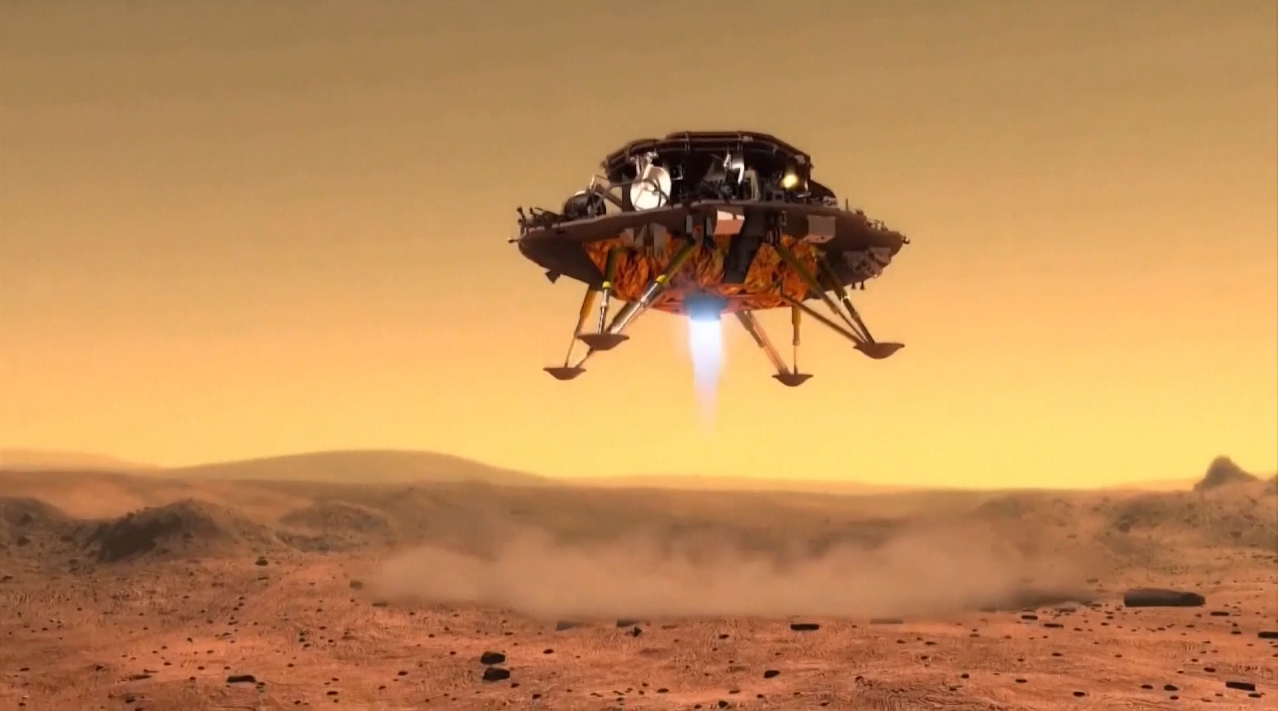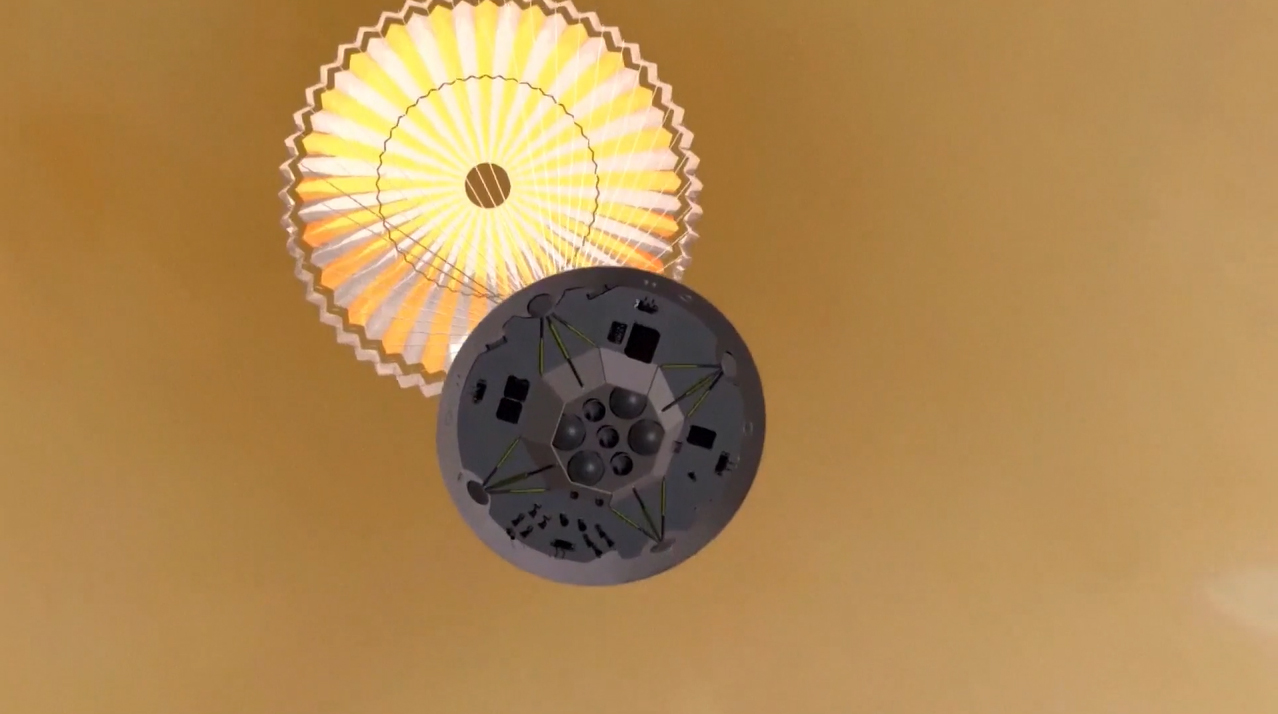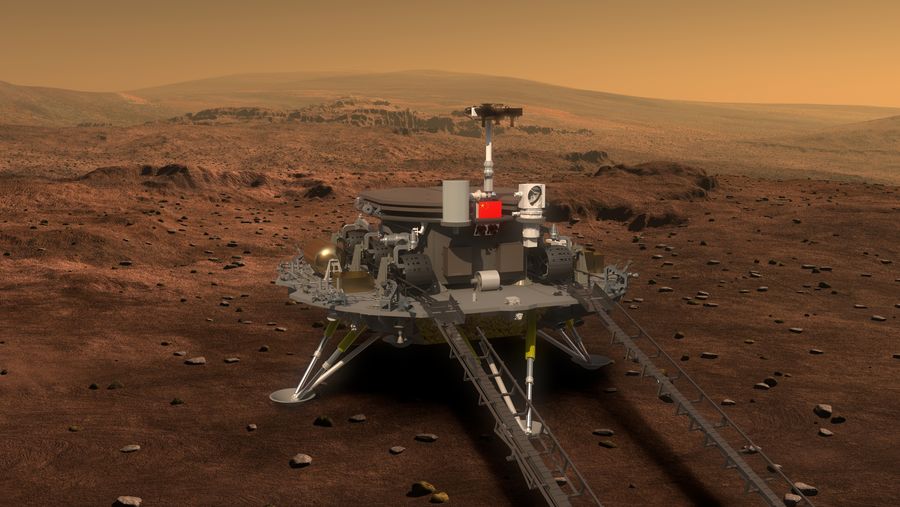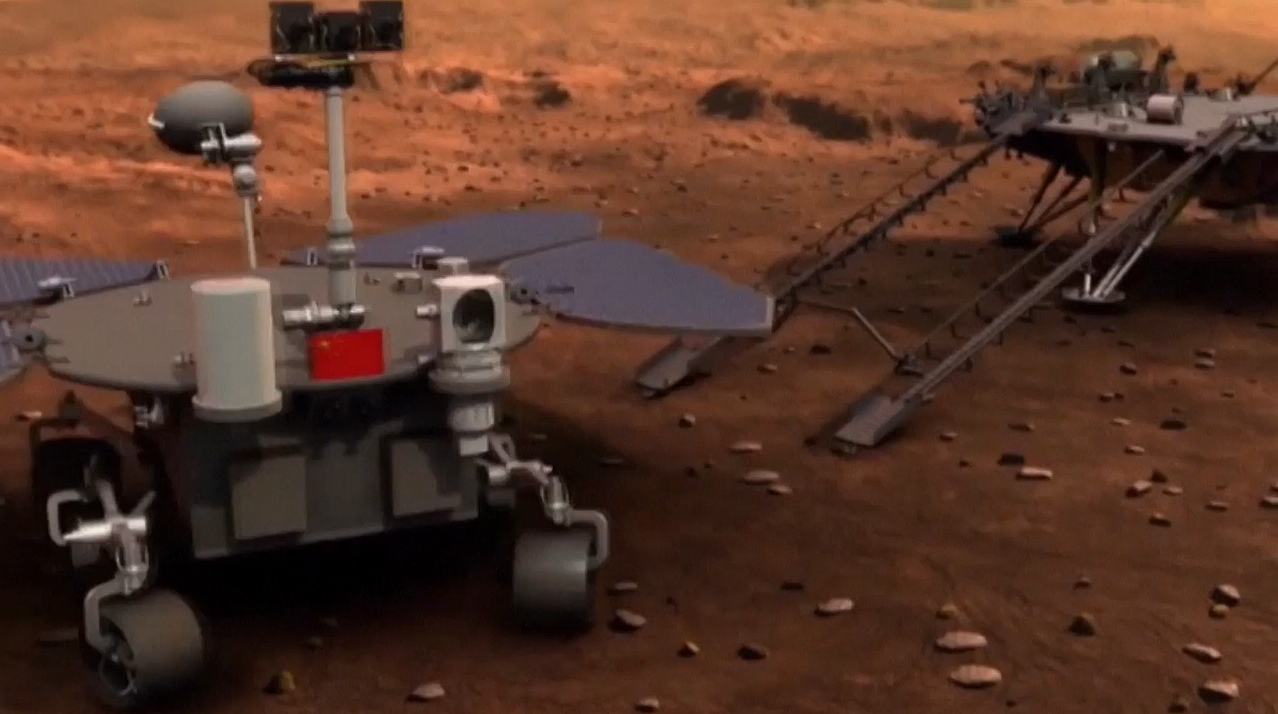China to attempt its first Mars rover landing today
The Tianwen-1 mission's Zhurong rover is a first for China.

Update for 9:30 p.m. ET: Chinese state-run news outlets have confirmed that the Tianwen-1 mission has successfully arrived on the surface of the Red Planet! Read the full story here.
Update for 7:45 p.m. ET: China's Zhurong Mars rover should have touched down on the Red Planet today (May 14) at approximately 7:11 p.m. EDT (2311 GMT), if all went according to plan. China's space agency has not provided any updates on the status of the Tianwen-1 lander and rover — not even a confirmation that it separated from the orbiter to begin the landing sequence — but said this morning that the landing could take place as late as May 15 (Beijing time).
China is about to attempt its first landing on the Red Planet.
The country's first Mars landing mission, called Tianwen-1 (which means "Heavenly Questions"), is scheduled to touch down on the planet's surface as early as tonight (May 14) at 7:11 p.m. EDT (1111 GMT), Ye Peijian, chief adviser of Interplanetary Exploration for the China Academy of Space Technology (CAST), revealed at a conference on Thursday (May 13). In a statement issued this morning, China's space agency said the rover has a landing window that extends through May 19.
Tianwen-1 consists of an orbiter, a lander and a golf-cart-sized rover called Zhurong, which is named after an ancient fire god in Chinese mythology. The mission launched in July 2020 on a Long March 5 rocket and has been circling Mars since Feb. 10. With Zhurong on board, the lander will endure "seven minutes of terror" as it plunges through the Red Planet's atmosphere for a parachute-assisted landing. It will aim to land in the Utopia Planitia region of Mars, the same area where NASA's Viking 2 mission touched down in 1976.
Related: China's Tianwen-1 Mars mission in photos
More: How China's Mars rover Zhurong will attempt to land on the Red Planet
Chinese space officials have not announced any plans to broadcast the landing live, and few details about the landing procedure have been made public. It will take about 17 minutes for mission controllers on Earth to receive a confirmation signal from Tianwen-1 after the landing occurs due to the time it takes transmissions to travel between the two planets.
Get the Space.com Newsletter
Breaking space news, the latest updates on rocket launches, skywatching events and more!
While Tianwen-1 will be China's first Mars landing mission, it isn't the first time China has attempted to launch a spacecraft to Mars. The country's first Mars mission was an orbiter called Yinghuo-1, which launched in 2011 with Russia's Phobos-Grunt Mars sample-return mission. However, Phobos-Grunt got stuck in Earth's orbit en route to Mars, and the mission ended by crashing into the Pacific Ocean.
If successful, the Tianwen-1 landing will make China the second nation to put a rover on Mars, after NASA (which has launched five Red Planet rovers, the most recent of which is Perseverance). Tianwen-1's arrival in Mars orbit also made China the sixth entity to successfully send a spacecraft to Mars orbit, following NASA, the Soviet Union, the European Space Agency (ESA), India and the United Arab Emirates. But only NASA and the Soviet Union have managed to land there so far; two attempts by ESA ended with crash landings, and the only Soviet spacecraft to arrive safely failed a few minutes after landing.
Related: A brief history of Mars missions





If Tianwen-1 survives the plunge intact, the Zhurong rover will drive down a ramp to exit the protective landing capsule, after which it will spend at least 90 Mars days (or about 93 Earth days) driving around and studying the composition and water-ice distribution of the Martian soil.
Meanwhile, the mission's orbiter will serve as a communications relay station between the rover and Earth while conducting its own scientific observations from above. The orbiter is designed to last for at least one Mars year, or about 687 Earth days (a day on Mars lasts about 40 minutes longer than a day on Earth).
Email Hanneke Weitering at hweitering@space.com or follow her on Twitter @hannekescience. Follow us on Twitter @Spacedotcom and on Facebook.
Join our Space Forums to keep talking space on the latest missions, night sky and more! And if you have a news tip, correction or comment, let us know at: community@space.com.

Hanneke Weitering is a multimedia journalist in the Pacific Northwest reporting on the future of aviation at FutureFlight.aero and Aviation International News and was previously the Editor for Spaceflight and Astronomy news here at Space.com. As an editor with over 10 years of experience in science journalism she has previously written for Scholastic Classroom Magazines, MedPage Today and The Joint Institute for Computational Sciences at Oak Ridge National Laboratory. After studying physics at the University of Tennessee in her hometown of Knoxville, she earned her graduate degree in Science, Health and Environmental Reporting (SHERP) from New York University. Hanneke joined the Space.com team in 2016 as a staff writer and producer, covering topics including spaceflight and astronomy. She currently lives in Seattle, home of the Space Needle, with her cat and two snakes. In her spare time, Hanneke enjoys exploring the Rocky Mountains, basking in nature and looking for dark skies to gaze at the cosmos.









